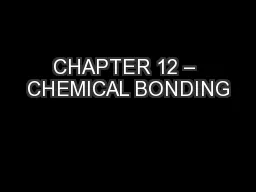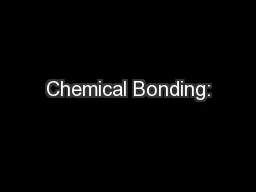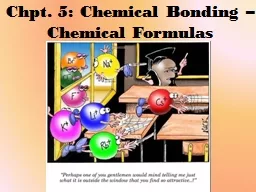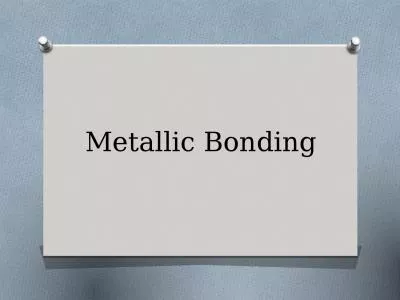PPT-CHAPTER 12 – CHEMICAL BONDING
Author : tawny-fly | Published Date : 2016-07-27
CHEMICAL BOND A force that holds two or more atoms together as a unit Individual atoms will naturally bond together to achieve a lower energy state to be more stable
Presentation Embed Code
Download Presentation
Download Presentation The PPT/PDF document "CHAPTER 12 – CHEMICAL BONDING" is the property of its rightful owner. Permission is granted to download and print the materials on this website for personal, non-commercial use only, and to display it on your personal computer provided you do not modify the materials and that you retain all copyright notices contained in the materials. By downloading content from our website, you accept the terms of this agreement.
CHAPTER 12 – CHEMICAL BONDING: Transcript
Download Rules Of Document
"CHAPTER 12 – CHEMICAL BONDING"The content belongs to its owner. You may download and print it for personal use, without modification, and keep all copyright notices. By downloading, you agree to these terms.
Related Documents














